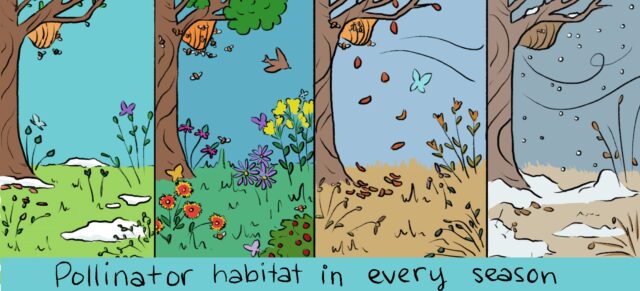
Issue:
Many of the plants we rely on for food, clothing, medicine, and building materials need pollinators to reproduce. Any animal that transfers pollen from one plant to the next is considered a pollinator. These animals, such as bees, butterflies, birds, and bats, may be small, but they are an important part of our natural world. Unfortunately, due to disease, development, and the prevalence of chemicals, many pollinators are dying.
Functions & Benefits
One way that we can help pollinators, the plants they pollinate, and ourselves, is to create pollinator habitat. Pollinator habitat can be a small area, such as a flowerpot, or can be a large area, such as an entire field. The best way to create pollinator habitat is to provide flowering plants throughout the spring, summer, and fall and to limit the use of chemicals in this habitat.
How to Provide Pollinator Habitat in Your Yard:
- Plant mostly native species. While non-native flowering species will attract pollinators, many of Montana’s pollinator species rely on native plants for nesting habitat.
- Plant 3-4 flowering species for each season – spring, summer, and autumn.
- Avoid overwatering so that ground nesting pollinators aren’t flooded.
- Carefully consider your use of pesticides and insecticides. Read the labels carefully to avoid excessive amounts and don’t apply near patches of flowering plants.
